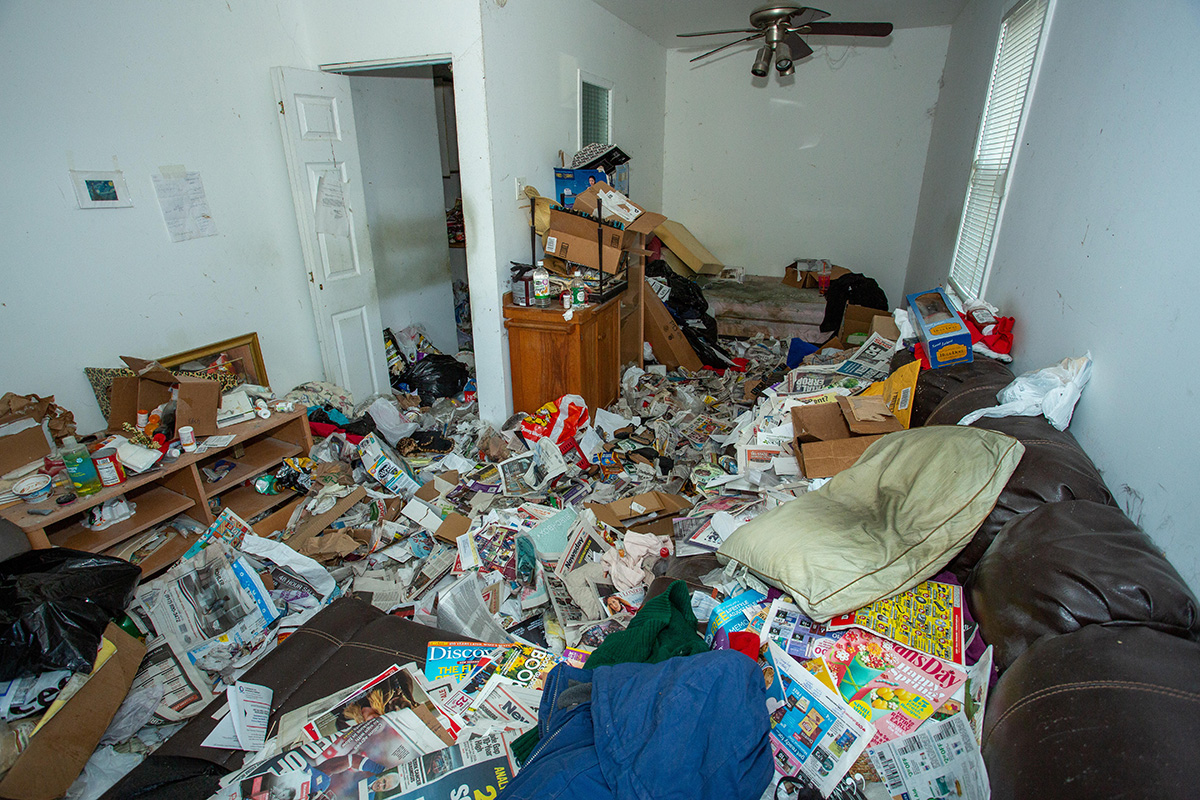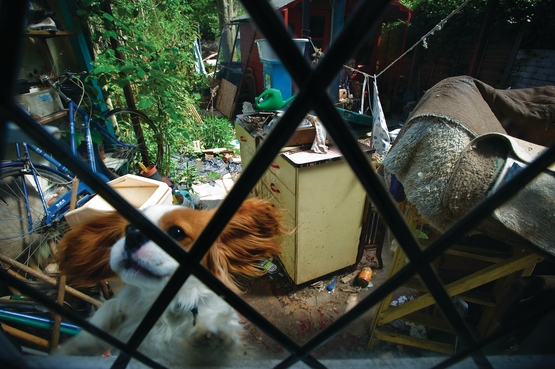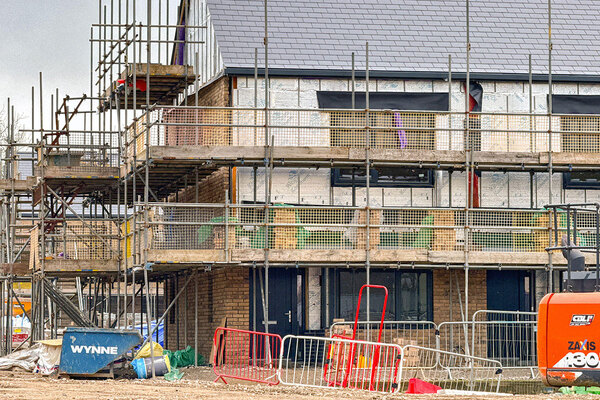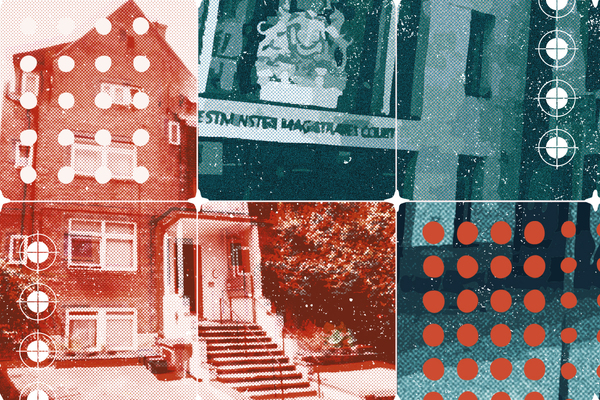‘Hoarding is more than just a fire risk’
Inside Housing and Aico’s Resident Safety Campaign seeks to uncover outstanding work by social landlords to raise residents’ awareness of safety issues. We hear from Amy Cheswick of Raven Housing Trust
In association with:

It is estimated that up to 5% of people in the UK suffer from a hoarding disorder, according to charity Hoarding UK. Having a hoarding disorder can be a safety problem for a number of reasons.
The accumulation of possessions and clutter, and inability to tidy, can make it difficult for the person to live in their home and do everyday tasks such as cooking. Along with the possibility of injury, the clutter can make it hard to clean, which can encourage rodent or insect infestations and the blocking of exits can be a problem in the event of a fire.
While a reluctance to let visitors into their home can be isolating for the individual, from a landlord’s perspective difficulties gaining access can create an unsafe environment if the resident will not allow tradespeople in for repairs or compliance checks.
Recently, Raven Housing Trust altered its approach to hoarding and ran a resident safety campaign to talk to residents about it. As one of Inside Housing’s Safer Homes Ambassadors, Amy Cheswick, director of customers and partners, explains what they have done.
Raven identified hoarding as a safety issue for residents, the properties they live in, and their neighbours. How did this come about?
For every housing association I’ve worked for, hoarding has always been an issue. What has been different at Raven is the approach. Previously the solution was focused on the property and not the person living there.
The traditional way was focusing on the property and enforcing house clearances. This wasn’t working for us and didn’t solve the problem because the resident would hoard again.
So a few years ago, we decided to change our approach to one that was more resident-focused. To work out how we were going to go about it, we gained advice from a psychologist and professional support groups for hoarding, and Surrey Fire and Rescue came to do home visits with us.
Now Raven has a new policy, new ways to address access and an action plan, and it has made a difference.
How do you identify a possible hoarding issue?
Sometimes it would be because our repairs and maintenance team or gas compliance team were refused access. Other times, the team was able to enter the property but they were unable to do the work because of the hoarding.
The other way that it used to come to light was neighbours complaining – perhaps about vermin, pests or smell.
How did your housing team change its approach?
We went to the root of the problem and thought about hoarding as a mental health issue. There are lots of reasons people hoard. By dealing only with the physical manifestation, we weren’t addressing an ongoing problem.
We started by learning more about what it is and why it occurs. It’s not simply about keeping an extraordinary amount of possessions or an inability to tidy and clean up – it’s a much deeper emotional response that needs to be considered.
We decided it would be a lot more effective if we worked with the resident and identified why this was happening to them and put their safety at the centre of a more holistic approach. It’s not just about the impact on the environment, the building’s safety and fire risk. It’s about the impact on the well-being of the individual – their own safety within their home as well as the wider neighbourhood.
SAFER HOMES AMBASSADOR
Amy Cheswick is director of customers and partners at 7,000-home Raven Housing Trust. She joined the organisation in 2013 and has worked in housing for more than 30 years.
Ms Cheswick is currently a fellow of the Chartered Institute of Housing and a member of the National Housing Federation’s Homelessness Steering Group. She was previously chair of the Chartered Institute of Housing’s South East board.
How many cases does the team tackle each year?
We retrained our trades team and frontline team, and we introduced a clutter rating, which is a series of photos that illustrate the severity of a hoarding situation, rated from one (a normal situation) to 10 (the worst scenario), and helps them to make an assessment. This helped our communication because we all understood what it meant if the situation was labelled as a three or a six. If it was rated four or more, we had to notify the safeguarding team.
As a result we processed a few more cases than usual – we suddenly escalated to 17 cases in a year. At present, we have 13 cases that are rated five and above. However we are finding that many are rated lower because our team are identifying the problem earlier, which is measured success.
People with hoarding issues often struggle to ask for help because they feel ashamed or guilty. How did Raven communicate the dangers of the issue to residents to encourage them to ask for help?
Knowing the characteristics of people who hoard, we knew that putting out information that said “come and talk to us if you have a hoarding problem” or telling the resident that their home was a fire risk wasn’t going to generate a response. Also, we didn’t want to encourage other residents to complain about neighbours.
Instead we wanted people to tell us if they thought something was unsafe. It was important that we didn’t communicate in a way that created blame or appeared to label it as anti-social behaviour, so we focused on asking people if they were concerned about someone.
Although we were tackling the issue in a person-centred way, it also had a business benefit – clearing properties costs a lot of money and there can be legal issues if we’re having problems gaining access to a property. We knew it was often the same properties that were being reported and that it was difficult to engage these residents. So we made a film last year with one of our residents.
Her hoarding started as a response to a bereavement and the loss and grief she was experiencing. She felt safe with things around her – particularly the area surrounding her bed – so we worked with her so she could clear her home herself. While that was personal to her, a lot of the symptoms she was exhibiting are common among people who hoard. The film showed how it feels and provided an empathetic view, rather than being judgemental.
We used the film as part of the staff training to show to stakeholders what we were doing, and it’s on our website for residents to view.
What has the response been?
There’s no quick fix to this issue. We have been working with some of the residents for three years. The case manager has to gain their trust and work with them on a long-term basis. We don’t want to go into residents’ homes and tell them what to do – we’re taking the time to find out what’s happening with them that is making them hoard and putting together an action plan to tackle it with the resident and to support them.
We have found that changing our communications approach and working with the resident to identify the underlying issue has made it less likely that hoarding will reoccur. We’re making a proper change rather than repeatedly clearing properties.
When we’ve had success with a resident, we’ve found that they are our best advocates and suggest to other residents to talk to Raven as we will be on their side and put their safety first.
Inside Housing’s Resident Safety Campaign with Aico is working with 12 Ambassadors to uncover outstanding examples of social landlords engaging with residents to raise awareness of safety issues.
Related stories











